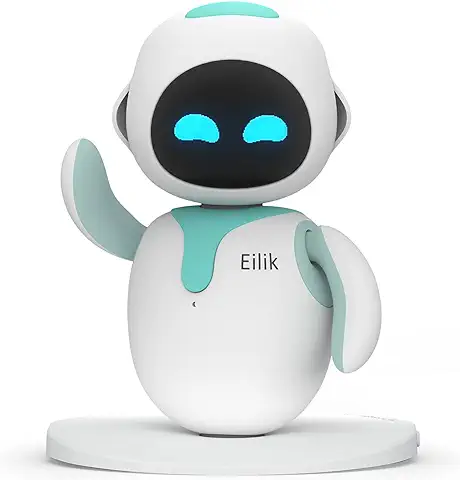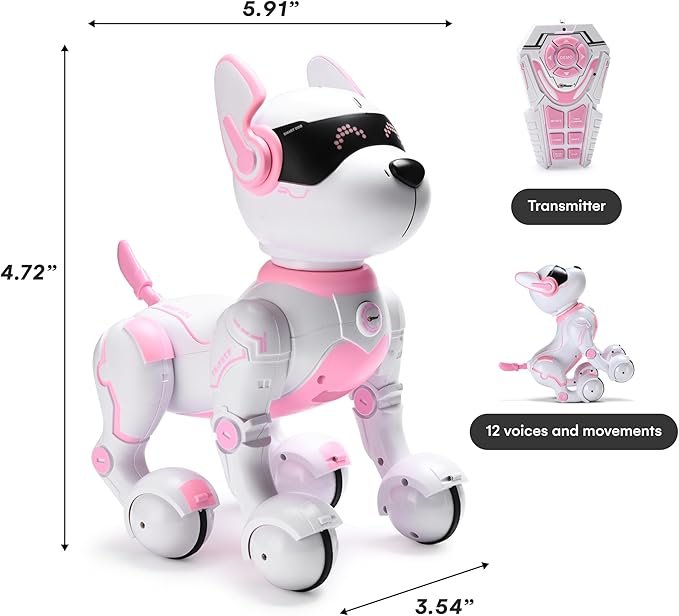Robot Pets: The Future of Companionship in a Digital World
Introduction
In a world where technology is seamlessly blending into our daily lives, robot pets are emerging as a fascinating alternative to traditional animal companions. These mechanical marvels are not just toys—they’re intelligent, interactive, and in many cases, emotionally responsive. Whether you're allergic to fur, live in a pet-restricted apartment, or simply want a low-maintenance companion, robot pets offer a futuristic solution that’s gaining popularity across all age groups.
1. What Are Robot Pets?
Robot pets are artificial companions designed to mimic the behavior, appearance, and sometimes even the emotional responses of real animals. They range from simple robotic dogs that bark and wag their tails to highly sophisticated AI-driven pets that can recognize voices, respond to touch, and even learn from their environment.
Some of the most popular robot pets include:
- Sony’s Aibo – A robotic dog with advanced AI and emotional intelligence.
- Hasbro’s Joy for All Companion Pets – Designed for seniors, these pets offer comfort and companionship.
- Tombot – A therapeutic robotic puppy developed for people with Alzheimer’s and dementia.
2. The Technology Behind Robot Pets
Modern robot pets are powered by a combination of:
- Artificial Intelligence (AI) – Enables learning, voice recognition, and emotional interaction.
- Sensors – Detect touch, sound, and movement.
- Actuators – Allow movement such as walking, tail wagging, or head tilting.
- Connectivity – Some pets connect to apps or the cloud for updates and customization.
These technologies work together to create a lifelike experience that can be surprisingly engaging and emotionally satisfying.
3. Benefits of Robot Pets
Robot pets offer a wide range of benefits, especially for people who may not be able to care for a live animal.
🧠 Mental Health Support
Studies have shown that interacting with robot pets can reduce stress, anxiety, and feelings of loneliness. This is particularly beneficial for:
- Seniors in assisted living facilities
- Children with autism
- Individuals with PTSD or depression
🧹 Low Maintenance
Unlike real pets, robot pets don’t require feeding, grooming, or vet visits. They’re ideal for people with busy lifestyles or physical limitations.
🏢 Pet-Free Environments
Many apartments, dorms, and workplaces don’t allow animals. Robot pets provide companionship without violating any rules.
4. Robot Pets for Seniors
One of the fastest-growing markets for robot pets is the elderly population. Products like Hasbro’s Joy for All pets are designed to provide comfort, reduce loneliness, and even stimulate memory in people with dementia.
These pets are soft, responsive, and capable of mimicking real animal behaviors like purring, barking, or turning their heads when spoken to. For many seniors, these robotic companions become a source of joy and emotional support.
5. Robot Pets for Children
For kids, robot pets are both educational and entertaining. They can teach responsibility, empathy, and even basic coding skills through programmable features.
Popular options include:
- Zoomer Interactive Puppies
- FurReal Friends
- Miko AI Robot
These pets are often used in STEM education to introduce children to robotics and artificial intelligence in a fun and engaging way.
6. Ethical Considerations
As robot pets become more lifelike, ethical questions arise:
- Can they replace real emotional bonds?
- Should they be used in place of human interaction?
- What happens when a child or senior becomes too attached?
While robot pets offer many benefits, they should complement—not replace—human relationships and real-life experiences.
7. The Future of Robot Pets
The future of robot pets is incredibly promising. With advancements in AI, machine learning, and robotics, we can expect:
- More realistic behaviors and emotional responses
- Customizable personalities
- Integration with smart home systems
- Enhanced therapeutic applications
Imagine a robot pet that not only responds to your voice but also adjusts its behavior based on your mood, daily routine, or health data. That future is closer than you think.
8. Choosing the Right Robot Pet
When selecting a robot pet, consider the following:
- Purpose: Is it for companionship, therapy, or education?
- Age Group: Some pets are better suited for children, others for seniors.
- Features: Look for interactivity, battery life, and connectivity.
- Budget: Prices range from $50 to over $3,000 depending on complexity.
Conclusion
Robot pets are more than just a novelty—they’re a meaningful innovation in the way we experience companionship. Whether you're looking for a friend, a therapeutic tool, or a fun learning device, these digital companions are changing lives and redefining what it means to have a pet in the 21st century.
As technology continues to evolve, so too will our relationships with these robotic friends. The future of companionship is here—and it’s wagging its tail.
🧠 AI Companion Pets
Smart, Loving, and Always There for You
Discover a new kind of companionship with AI-powered pets that go beyond simple interaction. These intelligent companions can recognize your voice, respond to your emotions, and even adapt to your daily routines. Whether you're looking for a friend for your child, a comforting presence for a loved one, or just a tech-savvy buddy for yourself, AI companion pets offer a unique blend of warmth and innovation.
They don’t just react—they connect.
👉 Perfect for: Tech enthusiasts, families, and anyone seeking emotional support without the responsibilities of a real pet.
👵 Robotic Pets for Seniors
Comfort, Connection, and Care—Without the Complications
Robotic pets designed for seniors provide more than just entertainment—they offer emotional support, reduce feelings of loneliness, and help stimulate memory and conversation. With soft fur, gentle movements, and realistic sounds, these pets are ideal for elderly individuals, especially those living alone or in assisted care.
They require no feeding, no walking, and no vet visits—just love and attention.
🧡 Recommended for: Seniors, caregivers, and families looking to improve quality of life through companionship.
🐾 Interactive Robotic Animals
Play, Learn, and Grow with Every Interaction
Interactive robotic animals are the perfect blend of fun and functionality. Designed to engage users of all ages, these pets respond to touch, voice, and movement, creating a dynamic experience that feels almost real. Many models are programmable, making them excellent tools for teaching kids about technology, empathy, and responsibility.
🎓 Ideal for: Children, educators, and parents who want to combine playtime with learning.
🧼 Low Maintenance Pet Alternatives
All the Joy of a Pet—None of the Mess
Love animals but not the hassle? Robot pets are the ultimate low-maintenance alternative. No shedding, no allergies, no cleaning up after them. Just turn them on and enjoy their company. Whether you live in a small apartment, travel often, or simply prefer a cleaner lifestyle, these robotic companions fit perfectly into modern living.
🏙️ Best for: Busy professionals, minimalists, and anyone who wants a pet without the daily chores


